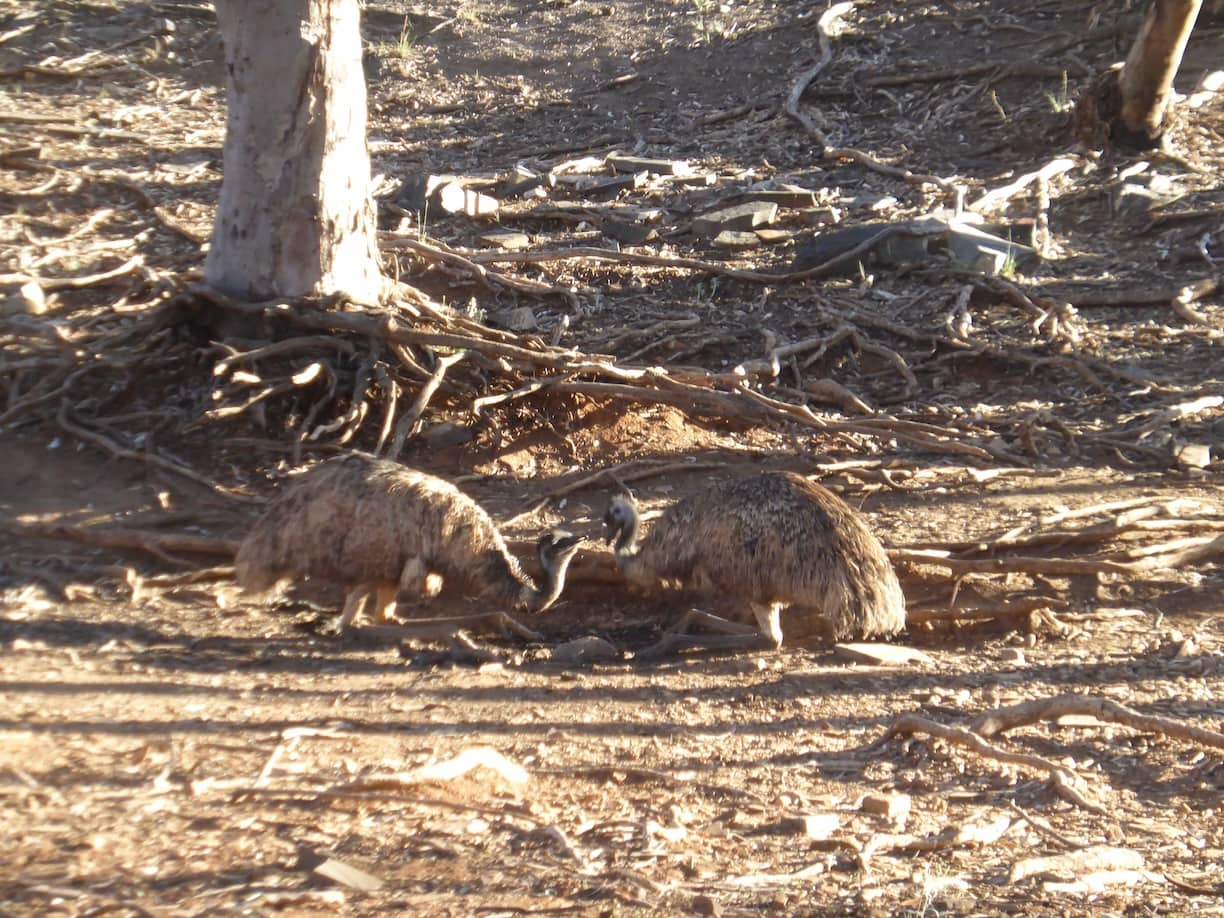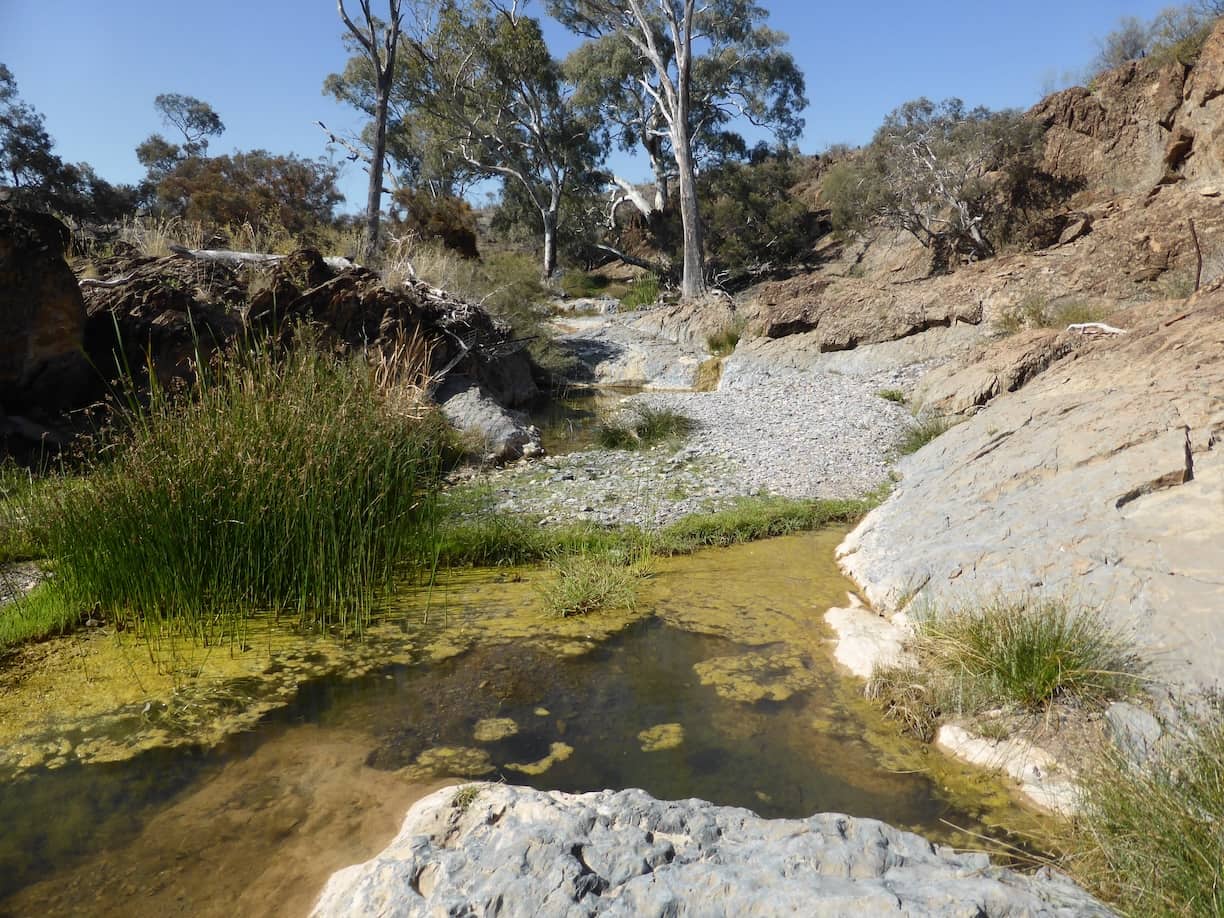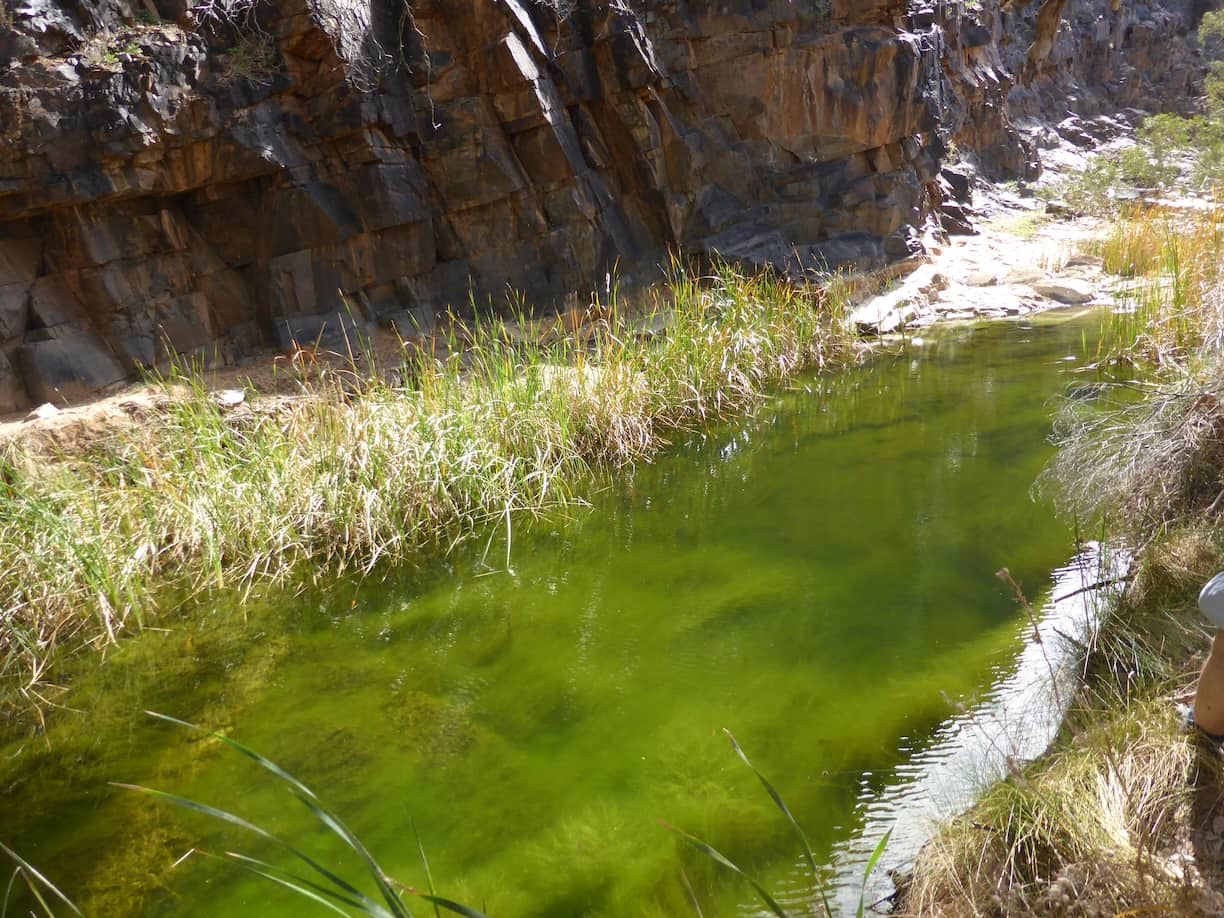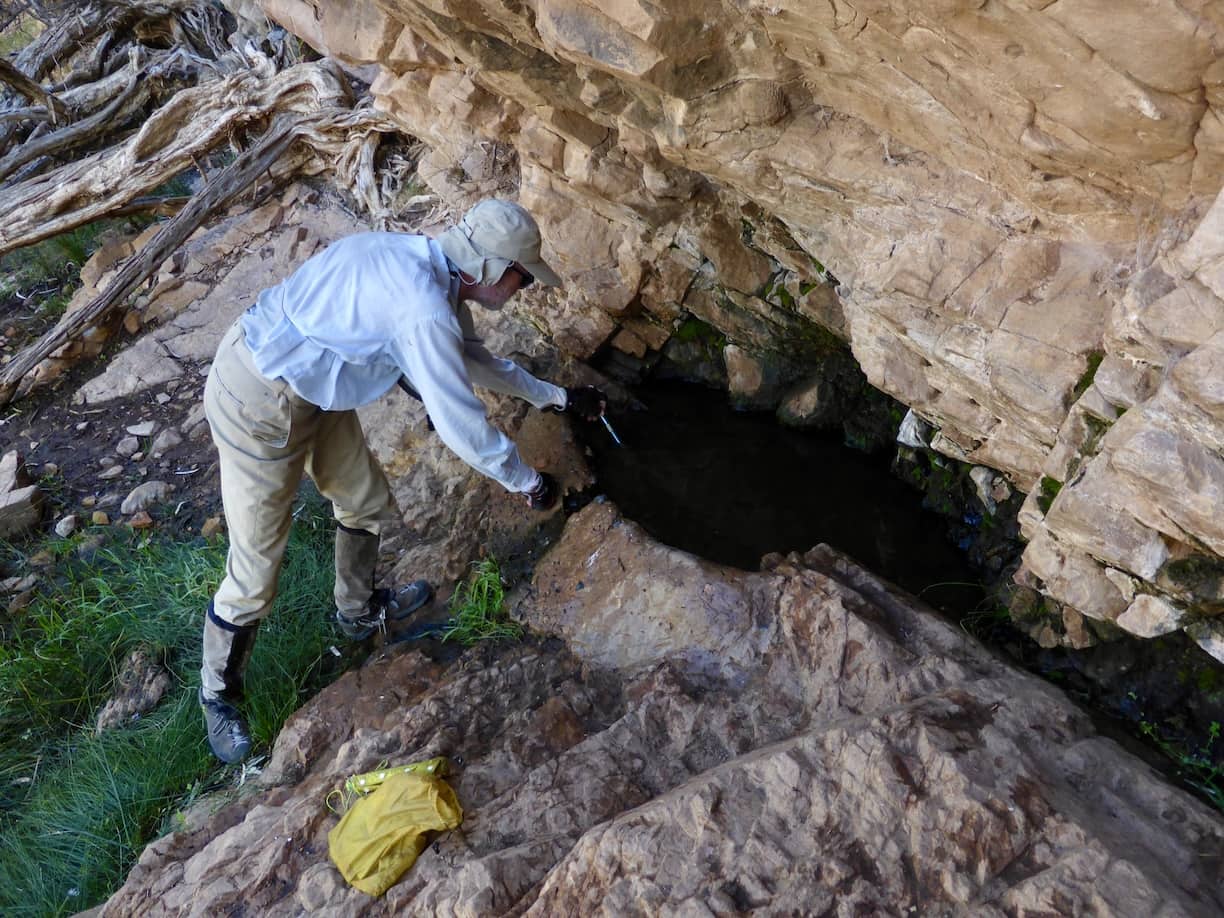A research project and an invitation.
The title has the hallmark of a newspaper editor’s love of the attention-grabbing headline but with rainfall expected to decline over the coming decades, it’s surely not an unreasonable question to ask. Lower rainfall means less recharge of aquifers which could result in less water for springs.
Groundwater levels and spring-fed pools have been shown to have declined in the southern Flinders’ Willochra catchment but the situation is less clear in the generally more complex terrain of the central and northern Flinders. In some parts of this region however, springs that once served C19 homesteads and shepherds’ huts have dried up, either greatly (as at Aroona) or completely (e.g. as at Oraparinna, Appealinna, Enorama and Jones Creek) except perhaps in wet years. Similarly, the owner of one pastoral station recalled that while his property once had twelve active springs, only three now remain. Just how widespread this situation might be is not fully known.

I started taking an interest in the Flinders’ springs around a decade ago and two articles in Tandanya (in 2014 and 2017) prompted Rob Jung, a Sydney bushwalker and retired CSIRO ‘mud chemist’ (as he describes himself) and a longtime Flinders veteran, to get in touch. This started a bushwalking and springs collaboration that continues to this day and from which I have gained a lot. We did only one Flinders trip entirely focused on springs and that was in September 2023 when we visited 30 springs on six properties and, as usual with such trips, came across ‘everything’ ranging from map errors and contradictions, and from dry sites to isolated pools, streamlets both big and small to Wilpena Creek’s Artipena Spring and its mighty pool on Martins Well.
This interest in springs is now hopefully set to be the subject of a postgraduate study thanks to Prof. Justin Brookes, School of Biological Sciences, University of Adelaide, who thinks well enough of the topic (and presumably of me) to offer to be my supervisor. (The University’s formal approval process is currently underway.) The University’s association will not just mean academic and operational support, but it should also broaden the scope of the study and increase its credibility with stakeholders, including funding bodies.

A major part of the study will be to continue the field survey of the 180 or so springs recognised in the 1:50,000 topographic map database on 48 pastoral properties and the two national parks within Landscape SA’s South Australian Arid Lands (SAAL) North Flinders region and which extends from the northernmost hills to properties SE of Hawker. The purpose of the survey is threefold:
- to produce a database of the springs with many parameters measured, scored or described (and consistent with published studies)
- to test the water onsite for Total Dissolved Solids
- to take a sample for subsequent testing for tritium, from which the age of the waters can be determined.
This last idea is Prof. Brookes’ initiative, not mine. Astonishingly, water from springs is often thousands of years old, and it can vary considerably. From this, associations between springs, bores and aquifers might hopefully be ascertained. This could help explain why springs might be drying up in some locations but not others.
A further aim of the study is to understand how the springs and their pools, and different bores and aquifers may have changed over the past fifty years or so and for this, all willing stakeholders in the region will be interviewed. These will include all current and former owners and managers of stations, and the Adnyamathanha communities.

To take advantage of the opportunity the study presents, a side interest is to identify and plot the distribution of the thirty or so species of sedges and rushes that have been recorded in the study area. This interest was possibly sparked by an earlier study of springs in part of the region that identified these plants only to family level and I thought that they deserved better.
With only one or two exceptions, identification to species level in these two plant families is a real challenge. This is not helped by the plants often being found to be either, by the time I get to them, long past flowering or eaten down by livestock, goats and ‘roos so that the flowering parts required for identification are either too degraded or missing. Despite such setbacks, I am somewhat heartened by recently finding a species of rush and an aquatic plant not previously recorded in the region.
Not long ago, someone in the club asked me why bother with field trips when remote sensing techniques can tell us so much and now seem to be all the go. Well, even without the need to collect water and plant samples, I would still want to visit the springs anyway. That’s because I think it’s the only way to get a real feel for a place (very scientific!) and arguably perhaps, because you can learn some things only by being there.

Of course, the most important reason of all is because it’s the only way to treat the addiction that an interest in springs can lead to. Believe me, the rising anticipation you experience as you approach a new spring can be truly addictive because they are all different and you never know what you might find there. And finally, of course, because walking is often involved and that’s what we bushwalkers do!
And now the invitation! If things go to plan, I expect to be spending up to 12 weeks in the Flinders this year. A further advantage of the university association is that it allows me the use of a 4WD which will literally save days of walking (and that most welcome despite what I earlier just wrote). However, University policy stipulates that the vehicle must have two passengers if used off-the-bitumen, and wanting to play by the rules, I am looking for people who may be interested in joining me. Certainly, I think that if you come, you are sure to find it interesting and who knows, even a bit entertaining and educational at times.
If you think that this might be you and I hope so, please get in touch mhround@yahoo.com.au and we can talk about it.

Postscript: My interest in springs began as a hobby about a decade ago and, no matter how hard it might get trying to make sense of it all (the fun-part field work already dealt with), I’m going to treat it in the same way as I did when I started, and that is as a hobby. That way, it will hopefully stay fun and keep me sane. When it is finally finished and I end up as a jack of all trades and master of none (identification of sedge and rush spp a possible exception), my greatest pleasure will be in acknowledging all those people who helped me along the way and if even if in the smallest way.
Editor’s note: this project is not affiliated with Adelaide Bushwalkers and participants enter it at their own risk. it would be advisable for only qualified members.
Next: The Wilpena Gap ‘Big Pond’
Top image: Wildawildinna Spring (Lower) Narrina PS


Comments (0)